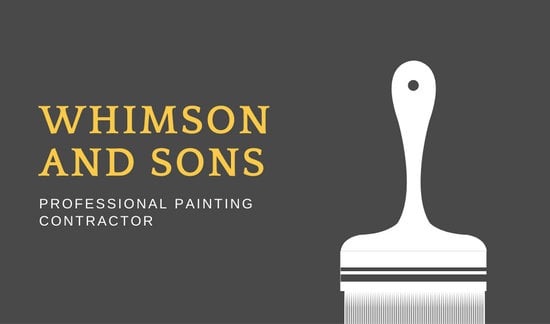Understand Just How Seasonal Problems Influence The Success Of Commercial Outside Paint And Find Out The Excellent Durations To Ensure Lasting Outcomes For Your Task
Understand Just How Seasonal Problems Influence The Success Of Commercial Outside Paint And Find Out The Excellent Durations To Ensure Lasting Outcomes For Your Task
Blog Article
Material By-Korsholm Whalen
When you're preparing an industrial outside paint project, seasonal factors can make or break your outcomes. You'll want to consider just how temperature and moisture effect paint application and drying times. Picking the ideal period can guarantee your paint sticks appropriately and lasts longer. But which periods are genuinely the very best for this sort of job? Let's discover the crucial elements that can influence your project's success.
The Impact of Temperature on Paint Application
When you're intending a business outside painting task, the temperature can dramatically influence just how well the paint sticks and dries.
Ideally, you wish to repaint when temperature levels vary between 50 ° F and 85 ° F. If it's as well cold, the paint might not treat properly, causing problems like peeling or splitting.
On the other hand, if it's too hot, the paint can dry also promptly, preventing proper adhesion and resulting in an irregular coating.
You should also think about the moment of day; early morning or late afternoon supplies cooler temperature levels, which can be more favorable.
Constantly check the maker's referrals for the details paint you're making use of, as they usually give advice on the ideal temperature level variety for optimal outcomes.
Humidity and Its Result on Drying Times
Temperature level isn't the only environmental element that influences your industrial outside painting project; moisture plays a substantial role also. Click On this page can slow down drying times drastically, influencing the total top quality of your paint work.
When the air is saturated with dampness, the paint takes longer to heal, which can lead to issues like bad attachment and a higher danger of mildew development. If you're painting on an especially humid day, be planned for extended delay times in between layers.
housepainter to check local weather conditions and plan accordingly. Ideally, aim for moisture levels between 40% and 70% for optimum drying.
Keeping these consider mind guarantees your project remains on track and provides a lasting finish.
Best Seasons for Commercial Exterior Painting Projects
What's the most effective time of year for your commercial outside painting projects?
Spring and early fall are typically your best bets. Throughout these periods, temperatures are moderate, and moisture degrees are commonly reduced, producing optimal problems for paint application and drying.
Prevent summertime's intense heat, which can trigger paint to dry too swiftly, resulting in poor attachment and coating. Likewise, winter's cold temperature levels can impede proper drying and curing, running the risk of the long life of your paint work.
Aim for days with temperatures between 50 ° F and 85 ° F for optimal outcomes. Remember to check the neighborhood weather report for rain, as damp conditions can spoil your task.
Planning around these variables ensures your painting job runs efficiently and lasts much longer.
Conclusion
Finally, intending your commercial exterior paint projects around seasonal considerations can make a substantial difference in the end result. By organizing job throughout the perfect temperatures and moisture levels, you'll guarantee far better bond and drying times. Keep in mind to keep an eye on neighborhood weather report and choose the right time of year-- spring and early fall are your best choices. Taking these steps will certainly assist you attain a resilient and professional surface that lasts.
